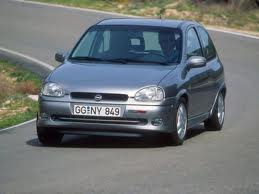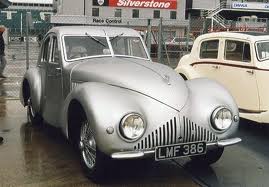


This edition of the Peugeot 106 16v GTi is the 5 speed / Manual version and was first brought out in 1996. This was at around the same time as the introduction of the 1997 TVR Speed 12 7.7L V12 and the 1996 Ferrari F50 GT1 4.7l V12.This particular Peugeot 106 has a 1587cc Naturally Aspirated Petrol powerplant with 4 cylinders in a St formation.
The 106 shares its Petrol St4 engine configuration with the likes of the 2019 Ariel Atom 4 2.0 Turbo and the 2013 Caterham 7 620 R 2.0 L Supercharged. If you're looking for other fast cars which share the 106's Front Wheel Drive, Hatchback combination then how about the 2022 Volkswagen-VW Golf R Performance 2.0 Turbo or the 2020 Toyota Avalon TRD 3.5 V6.
Weighing in at 925 kgs (2039 lbs) this makes the Peugeot 106 16v GTi in the same weight category as the 2020 Lotus Elise Sport 220 1.8 Supercharged or the give or take 50kg.
![Mini Cooper Countryman John Cooper Works 1.5 Turbo - [2022] image Mini Cooper Countryman John Cooper Works 1.5 Turbo - [2022] image](/editionimages/2335.jpg)
The Peugeot 106 shares the same bhp with the 2022 Mini Cooper Countryman John Cooper Works 1.5 Turbo (134 bhp)
In terms of power the 1587cc 16V St4 engine produces 120 bhp (89 kW) @ 6600 rpm similar to the 2022 Mini Cooper Countryman John Cooper Works 1.5 Turbo (134 bhp) or the 2017 Ford Fiesta 1.5 TDCi ST-Line 120 (118 bhp).
The Naturally Aspirated St4 throws out 107 lb-ft (145.0 Nm) @ 5200 rpm placing it with cars of similar torque performance figures such as the 2012 Lexus CT 200h 1.8L (105 lb-ft) or the 2012 Mini Cooper Paceman (118 lb-ft).
If one combines the weight with power or torque performance for the Peugeot 106 you can get a better idea of it's real world performance.
![Ford Fiesta ST 1.6 Turbo - [2013] image Ford Fiesta ST 1.6 Turbo - [2013] image](/editionimages/1491.jpg)
The 2013 Ford Fiesta ST 1.6 Turbo (154.7 bhp per ton) has similar Bhp Per Ton stats as the Peugeot 106.
The Peugeot 106 has a Power to weight ratio of 129.7 bhp per ton and 115.6 lb-ft per ton. Bhp Per Ton figures of the 1996 106 competing with the 2013 Ford Fiesta ST 1.6 Turbo (154.7 bhp per ton) or the 2002 Bentley Arnage R 6.8 V8 Turbo (154.7 bhp per ton).
If you agree with the late great Carroll Shelby then arguably an even better indicator of potential performance, Torque. Use weight as well and you end up with - Torque per ton, with the Peugeot 106 generating around 115.6 lb-ft per ton. If you're curious as to what other cars have as much torque to weight then look no further than the 1996 Alfa-Romeo GTV 3.0 V6 Lusso (140.6 lb-ft per ton) or the 2004 Seat Ibiza 1.8 20vt FR (140.3 lb-ft per ton).
With a 0-60mph time of 8.40 secs or a 0-100km/h (0-62mph) of 8.7 secs, this made the Peugeot 106 16v GTi as fast as the 2007 Seat Ibiza 1.8 20vt FR (8.40 secs) the 2006 Peugeot 207 CC GT (8.40 secs) the 2003 Vauxhall-Opel Astra 2.2 16V (8.40 secs) the or the 1989 Citroen XM 3.0 V6 (8.40 secs). This Peugeot 106 16v GTi is also faster than the 2012 Land-Rover Range Rover Sport 3.0 TDV6 (8.50 secs) the 2004 Land-Rover Discovery 3 4.4 V8 (8.50 secs) the 2000 Volkswagen-VW Golf GT TDi 150 (8.50 secs) the and the 1997 Peugeot 306 2.0 XSi (8.50 secs).
When talking about the performance of the Peugeot 106 on the drag strip it can reach a quarter mile in an estimated 16 secs @ 85.5 mph. Similar performance down the quarter mile can be found with the the 1993 Mercedes C Class 36 AMG (15.93 secs), the 2002 Volkswagen-VW Golf R32 (15.94 secs), and the 2001 Mercedes CLK 430 4.3 V8 (15.94 secs).
Modern performance cars are often artificially restricted to 155mph. The 1996 version of the Peugeot 106 16v GTi has a maximum speed of 127mph.
If maxing out your car on the AutoBahn is your thing and you're wondering what's faster than the 1996 Peugeot 106 16v GTi then how about the 2020 Audi A1 A1 Sportback 35 TFSI S tronic S line (138 mph), the 2008 Audi A3 2.0tdi Quattro S-Line (138 mph), or the 2004 Renault Clio 2.0 16V Renaultsport Trophy 182 (138 mph).


Aston-Martin Atom 2.0L
Engine: Naturally Aspirated Petrol | 1970cc 8v St4
Top Speed: 110 mph
0-60mph: 19.00 seconds

TVR Griffith 4.3
Engine: Naturally Aspirated Petrol | 4280cc 16v V8
Top Speed: 268.7 kph
0-100kph: 4.2 seconds



















